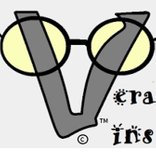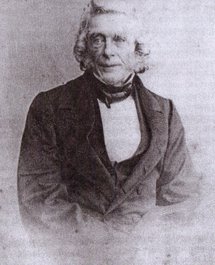Patrick Matthew
The man who pursues science for its own sake and not for the pride of possession, will feel more gratitude towards the surgeon who dislodges a cataract from the mind's eye, than towards the one who repairs the defect of the bodily organ.
On Naval Timber and Arboriculture by Patrick Matthew (1831).
Terms and phrases that were, apparently, first coined by Matthew in 1831
Contrary to prior Darwinian "knowledge", my book 'Nullius in verba : Darwin's greatest secret' reveals that Matthew's prior-publication of the full hypothesis of natural selection was read by naturalists known to Darwin and Wallace pre 1858 - because they actually cited it in the literature. In addition to those 25 individuals (seven of whom were naturalists) now newly known to have cited Matthew's book before 1858, we can also make an informed guess about others who more likely than not read it, or were in some way 'knowledge contaminated' by others who had.
Thanks to the invention of the Internet, Google Chrome, its library of over 30 million publications, and the ID research method, we are today able to search for the apparent first published use of particular words, terms and phrases. As more publications are scanned we may find earlier usages that disprove our first conclusions. But that is how knowledge has always progressed. For example, the possibility of one day discovering a human skeleton in the fossil record below that of a dinosaur does not stand to disprove the theory of natural selection; quite the opposite. The ability to completely disprove such a hard to vary theory in one fell stroke, with one piece of disconfirmatory evidence, is exactly what makes it such a powerfully important theory.
The First to be Second (F2b2) Hypothesis
Those who the IDD method in Google's Library reveals are apparently first to be second with apparently original words, terms or phrases more likely than not replicated them because they read them first in the apparently original source. or they were in some other way 'knowledge contminated' by it.
List 2 of those apparently first to be second with apparent unique Matthewisms - taken from the 2014 600 page e-book 'Nullius in Verba: Darwin's greatest secret'
- 1
1833 — Ellerby: "plants so far asunder"
1835 — Main: "luxuriant growing trees"
1834 — Conrad: "admixture of species"
1834 — Roget: "living aggregates"
1834 — Low: "long continued selection"
1836 — Rafinesque: "evinced in the genus"
1837 — Wilson: "threatened ascendency"
1837 — Anonymous: "nature's own rearing"
1837 — Dovaston: "sport in infinite varieties"
1838 — Anonymous translator: "portion of the surface of our planet"
1840 — Buel: "infirm progeny"
1840 — Swackhamer: "beat off intruders"
1841 — Johnson: "adapted to prosper"
1841 — Hill: "deeper richer soil"
1842 — Selby: "greater power of occupancy"
1844 — Low: "overpowering the less"
1846 — Emmons: "habits of varieties"
1846 — Alabama Supreme Court: "Infirmity of their condition"
1848 — Charnock: "stiffest and most obdurate"
1849 — Emmons: "deteriorated by culture"
1852 — Wilkin: "figure is best accommodated"
1853 — Andrews: "impressions and habits acquired"
1854 — Mure: "dogmatical classification"
1855 — Fishbourne: "power to permeate"
1855 — Laycock: "mental or instinctive powers"
1856 — Gazlay: "adaptation to condition"
1858 — Powell: "restricted adaptation"
1858 — Floy: "law manifest in nature"
1858 — Leidy: "impressions in insects"
Because David Low and Ebenezer Evans were each apparently first to be second with two apparently unique Matthewisms, they provide some evidence to confirm the F2b2 hypothesis. Further confirmation of the hypothesis comes by way of the fact that Cuthbert Johnson and Robert Chambers were not only apparently first to be second with unique Matthewisms pre-1859 they also cited Matthew elsewhere pre-1859.
In the spirit of veracity and objectivity we should do our utmost to kick our own "precious" hyptheses to death. Only if they remain standing, despite such concerted efforts, might they be of some possible value. Therefore, to help us seek to disconfirm the F2b2 hypothesis, if you can find a pre-1831 published use of any of the above "Matthewisms" please leave the details on my BestThinking blog on this topic (here).
My blog post on Charles Lyell, Darwin's great friend and mentor reveals how my analysis, conducted to test the F2b2 hypothesis, reveals how and why many geologists known to Lyell appear to have read Matthew's 1831 prior publication of the full theory of natural selection in the 1840s.
Charles Lyell's Links to Patrick Matthew: An Etymological Detective Story. By Mike Sutton {Read}.
Closely related to the issue of Matthewisms, the next thing read is the F2b2 hypotheis - here - on this website.
Matthew
Solver of the problem of species
In 1831, the Scottish laird, farmer, orchard owner, grain dealer and botanist, Patrick Matthew, authored 'On Naval Timber and Arboriculture.' Matthew's book is universally recognised as the first publication to contain the complete hypothesis of the theory of natural selection. New evidence proves that both Darwin and Wallace lied by pretending they had no prior-knowledge of it; both committed science fraud by plagiarising Matthew's discovery, his name for it, his examples of the process in nature compared to culture. They even ripped-off his unique creative perspective.


